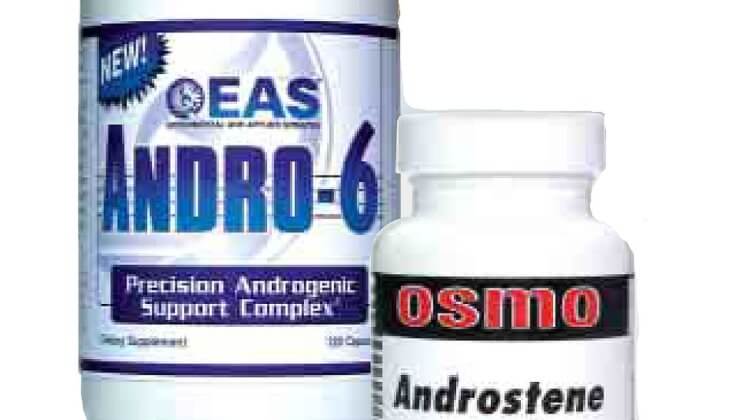
Dear Lyle,
I’m a 37 year old male who has been working out for the last 5-6 months, after about 5 years of not working out. I’ve been doing some reading about body building. It seems that most articles are really just advertisements in disguise. But the most impressive product I’ve seen appears to be 4-androstene3, 17-dione. I’ve seen claims that it can increase your Testosterone level by up to 350% and more. Is this true and does it actually benefit people or are there some potential negative side effects? Finally what’s up with all of the androstene variants which are appearing?
Androstene does appear to have some neat things behind it, doesn’t it? There is only ONE peer-reviewed study (published way back in 1962 in Acta Endocrinologica) which compared Androstene to DHEA. They gave 100 mg of each to two women (two women in each group). The androstene did significantly raise testosterone and I seem to recall it was to the tune of about 300% with the peak occurring around 90 minutes and the elevation in test. remaining for about 3 hours total. But that’s in women who have between 1/10th to 1/30th of the testosterone that men do.
So, I’d expect a supplement which converts to testosterone to have MUCH greater effects in women than in men. DHEA falls into this category, raising test. in women but not reliably in men (depends on age). The other ‘studies’ which are being cited by the companies are German patents for it’s use as an anabolic, nothing peer reviewed. At least not yet. Oh yeah, one of the studies people like to cite looked at andro -> conversion in ovary slices. REAL applicable to humans.
In any event, I think there *may* be something to androstene. I used it for a month and noticed more aggressiveness in the gym, a killer pump and increased libido (not good when you’re single). I have heard similar things from other individuals so I think it’s way more than a placebo effect.
The unanswered question is whether a 3 hour increase in testosterone will have a *significant* effect on muscle mass. Right now all we can do is speculate. I have a feeling that 24 hour testosterone levels are arguably more important than any increase which occurs over a short time period. However since testosterone levels can begin to decrease during a workout (I’ve always seen one hour given but have never found the studies supporting that), I could see a rationale for taking androstene about 30 minutes before you being training so that the androstene will be peaking (90 minutes remember) when your body’s normal testosterone levels are dropping. Might prevent a shift from anabolism to catabolism.
Now, you could always dose andro throughout the day (say one dose every 3 hours) to increase testosterone all day long but you’d increase the risk of side effects which are IDENTICAL to that of anabolic steroids. These include shutdown of endogenous testosterone production, aromatization to estrogen which can cause fat gain and the development of gynocomastia (swelling of male breast tissue), acne, etc. In fact, one of my female trainees has acne breakouts (and gets real aggressive/libidinous) when she uses a DHEA/andro combination.
I’d say that androstene is definitely doing *something* physiologically. The question is whether it’s going to have the major impact on growth/recovery that everyone seems to be claiming. Without peer reviewed research, it’s hard for me to say with 100% accuracy. Also considering the established increase in training intensity with pre-workout androstene, it’s always possible that people are growing from using it because they are training harder. As with most supplements, since so few studies are done on weight trainers anyhow, you have to try it for yourself, try to keep all other training variables (diet, training structure) constant and just see what happens.
As far as all of the androstene variants which are now showing up, I’ll be honest that I haven’t really kept up with any or all of them. According to what little I’ve read and a few people I’ve talked to, the variants may convert to testosterone through different enzymatic pathways or convert to slightly different molecules (i.e. norandrostene converts to nor-testosterone, aka nandrolone).
About the author
Lyle McDonald+ is the author of the Ketogenic Diet as well as the Rapid Fat Loss Handbook and the Guide to Flexible Dieting. He has been interested in all aspects of human performance physiology since becoming involved in competitive sports as a teenager. Pursuing a degree in Physiological Sciences from UCLA, he has devoted nearly 20 years of his life to studying human physiology and the science, art and practice of human performance, muscle gain, fat loss and body recomposition.
No replies yet
Loading new replies...
Join the full discussion at the MESO-Rx →